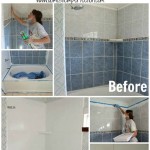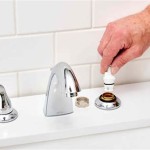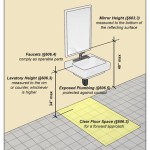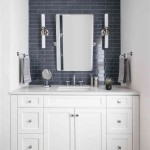Granite Bathroom Counter Sinks: Durability, Aesthetics, and Installation Considerations
Granite bathroom counter sinks have become a popular choice for homeowners seeking a blend of durability, aesthetic appeal, and increased property value. The natural stone’s inherent characteristics make it a desirable material for bathroom applications, offering a unique combination of strength, resistance to wear, and timeless beauty. This article will explore the key aspects of granite bathroom counter sinks, including their advantages, disadvantages, maintenance requirements, and considerations for installation.
Granite is an igneous rock formed from slow cooling magma deep within the Earth. This geological process results in a dense, crystalline structure that gives granite its exceptional hardness and resistance to scratching, chipping, and staining. The mineral composition of granite varies, contributing to the wide range of colors and patterns available. Common minerals found in granite include quartz, feldspar, and mica, which create the distinctive speckled or veined appearance that makes each granite slab unique.
The popularity of granite in bathroom design stems from its ability to withstand the rigors of daily use. Unlike some synthetic materials, granite is resistant to heat, making it suitable for holding hot styling tools without fear of damage. It is also impervious to water penetration when properly sealed, preventing the growth of mold and mildew. Furthermore, the natural variation in color and pattern ensures that no two granite bathroom counters are exactly alike, providing a personalized touch to any bathroom design.
Advantages of Granite Bathroom Counter Sinks
The benefits of choosing granite for bathroom counter sinks are numerous and contribute significantly to its desirability among homeowners and designers alike. These advantages extend beyond mere aesthetics and encompass practical considerations relating to durability, maintenance, and long-term value.
Firstly, granite's exceptional durability stands as a primary advantage. Its inherent hardness and resistance to scratches, chips, and stains make it a long-lasting material that can withstand the daily wear and tear of a busy bathroom. This durability translates to a reduced need for repairs or replacements, leading to cost savings over the lifespan of the counter sink.
Secondly, granite offers a wide range of aesthetic possibilities. The natural variations in color, pattern, and texture ensure that each granite slab is unique, allowing homeowners to select a material that perfectly complements their bathroom décor. From light, neutral tones to bold, dramatic hues, granite provides versatility in design and can be incorporated into a variety of styles, from traditional to contemporary.
Thirdly, properly sealed granite is highly resistant to water and bacteria. The non-porous nature of sealed granite prevents water penetration, which is crucial in a wet environment like a bathroom. This resistance to moisture inhibits the growth of mold and mildew, promoting a healthier and more hygienic bathroom environment. The ease of cleaning also contributes to maintaining a sanitary surface.
Finally, the installation of granite bathroom counter sinks can increase a home's resale value. Granite is often perceived as a high-end material, and its presence in a bathroom can elevate the overall appeal and value of the property. Potential buyers are often drawn to the durability and aesthetic qualities of granite, making it a valuable investment for homeowners.
Disadvantages and Considerations of Granite
While granite boasts numerous advantages, it is essential to acknowledge its potential drawbacks. Addressing these considerations proactively ensures informed decision-making and successful implementation of granite bathroom counter sinks.
Cost is a significant factor for many homeowners. Compared to laminate or tile, granite typically represents a higher upfront investment. The cost encompasses the material itself, fabrication, and installation. The price can fluctuate depending on the grade of granite, the complexity of the design, and the geographic location. It is crucial to obtain multiple quotes from reputable suppliers and installers to accurately assess the total cost.
Granite's weight can pose challenges during installation. The substantial weight of granite slabs requires careful handling and adequate structural support in the bathroom. Cabinets and framing must be reinforced to bear the weight of the granite, potentially adding to the overall installation cost. Professional installation is highly recommended to ensure proper support and prevent damage to the granite or surrounding structures.
While granite is generally stain-resistant, it is not entirely impervious to staining. Certain liquids, such as oil, wine, and acidic cleaners, can penetrate the sealant and cause discoloration if left unattended. Regular sealing is necessary to maintain the stain resistance of granite and protect it from potential damage. The frequency of sealing depends on the type of sealant used and the level of use the counter sink receives.
Granite, being a natural material, can have subtle variations in color and veining even within the same slab. This natural variation, while often appreciated for its unique aesthetic, can present challenges in achieving a perfectly uniform look. It is important to carefully inspect the granite slab before fabrication to ensure that the color and pattern meet your design expectations. Working with a reputable supplier who understands these natural variations is crucial.
Installation and Maintenance of Granite Bathroom Counter Sinks
Proper installation and diligent maintenance are crucial for maximizing the lifespan and aesthetic appeal of granite bathroom counter sinks. These aspects encompass the initial setup process and the ongoing care routines necessary to preserve the granite's pristine condition.
The installation process typically begins with precise measurements of the existing countertop space and sink basin. The granite slab is then cut and fabricated to the specified dimensions, including any necessary cutouts for the sink, faucet, and other fixtures. Edges are typically finished with a variety of profiles, such as bullnose, eased, or ogee, to enhance the aesthetic appeal and safety of the countertop. Professional installers will ensure that the granite is properly leveled and secured to the cabinet base using appropriate adhesives and fasteners.
Sealing is a critical step in the installation process. A high-quality sealant is applied to the granite surface to create a protective barrier against water penetration and staining. The sealant fills the microscopic pores in the granite, preventing liquids from seeping into the stone. The type of sealant used and the frequency of reapplication are important considerations. Some sealants are designed for specific types of granite and may require more frequent reapplication than others.
Daily maintenance of granite bathroom counter sinks involves simple cleaning practices. A mild soap and water solution is typically sufficient for removing dirt, grime, and spills. A soft cloth or sponge should be used to wipe down the surface, avoiding abrasive cleaners or scouring pads that can damage the sealant. It is important to promptly clean up spills to prevent potential staining, particularly from acidic or oily substances.
Regular resealing is necessary to maintain the stain resistance of granite. The frequency of resealing depends on the type of sealant used and the level of use the counter sink receives. A simple water test can determine if resealing is necessary. Pour a small amount of water onto the granite surface and observe if it beads up or soaks in. If the water soaks in within a few minutes, it is time to reseal the granite. Professional resealing services are also available, but homeowners can typically perform the task themselves with readily available products and instructions.
Avoiding harsh chemicals and abrasive cleaners is essential for preserving the integrity of granite. Acidic cleaners, such as vinegar or lemon juice, can etch the surface of the granite and damage the sealant. Abrasive cleaners can scratch the surface and dull the finish. Always use pH-neutral cleaners specifically designed for granite or natural stone. Following these simple maintenance guidelines will help ensure that your granite bathroom counter sink remains beautiful and functional for years to come.

Natural Granite Bathroom Vanity Tops Wolf Home S

Pros Cons Of Granite Bathroom Countertops

Granite Bathroom Vanity Countertops If You Re Looking For Something Naturally Durable
:strip_icc()/102130266-3174ac7d31314c7abfc80a1b65a11dd6.jpg?strip=all)
18 Luxurious Bathroom Countertop Ideas For All Budgets

Granite Bathroom Vanity Tops Make The Perfect Countertop

Bathroom Countertop Dad S Construction Best Local Contractor

Granite Bathroom Design Ideas Best Designs In 2024 Marble Com

Why Granite Bathroom Countertops Are Growing In Popularity Custom Vanity

Granite Vanity Tops For Your Bathroom Arch City

Beautiful Bathroom Countertop Designs For A Luxurious Look Homes
Related Posts







